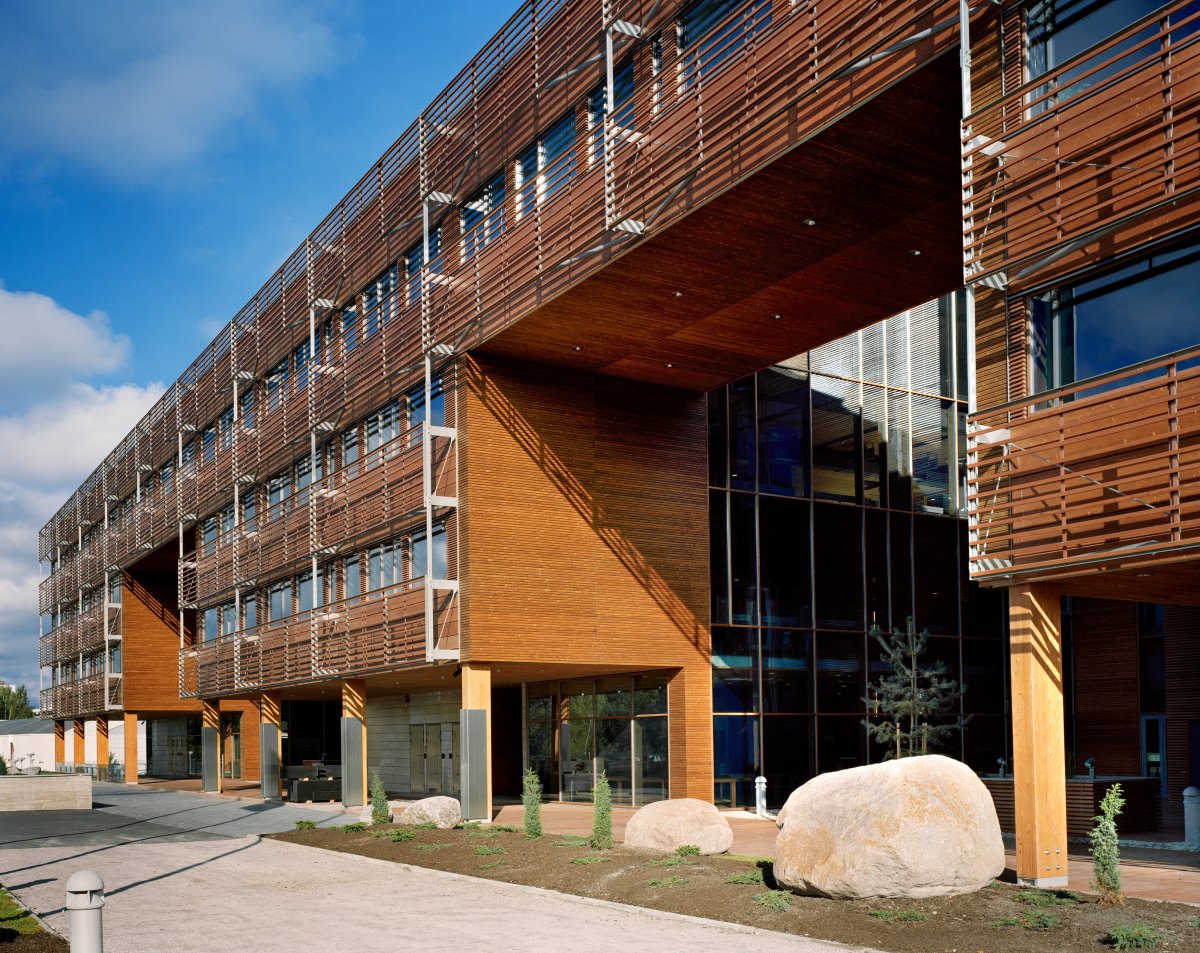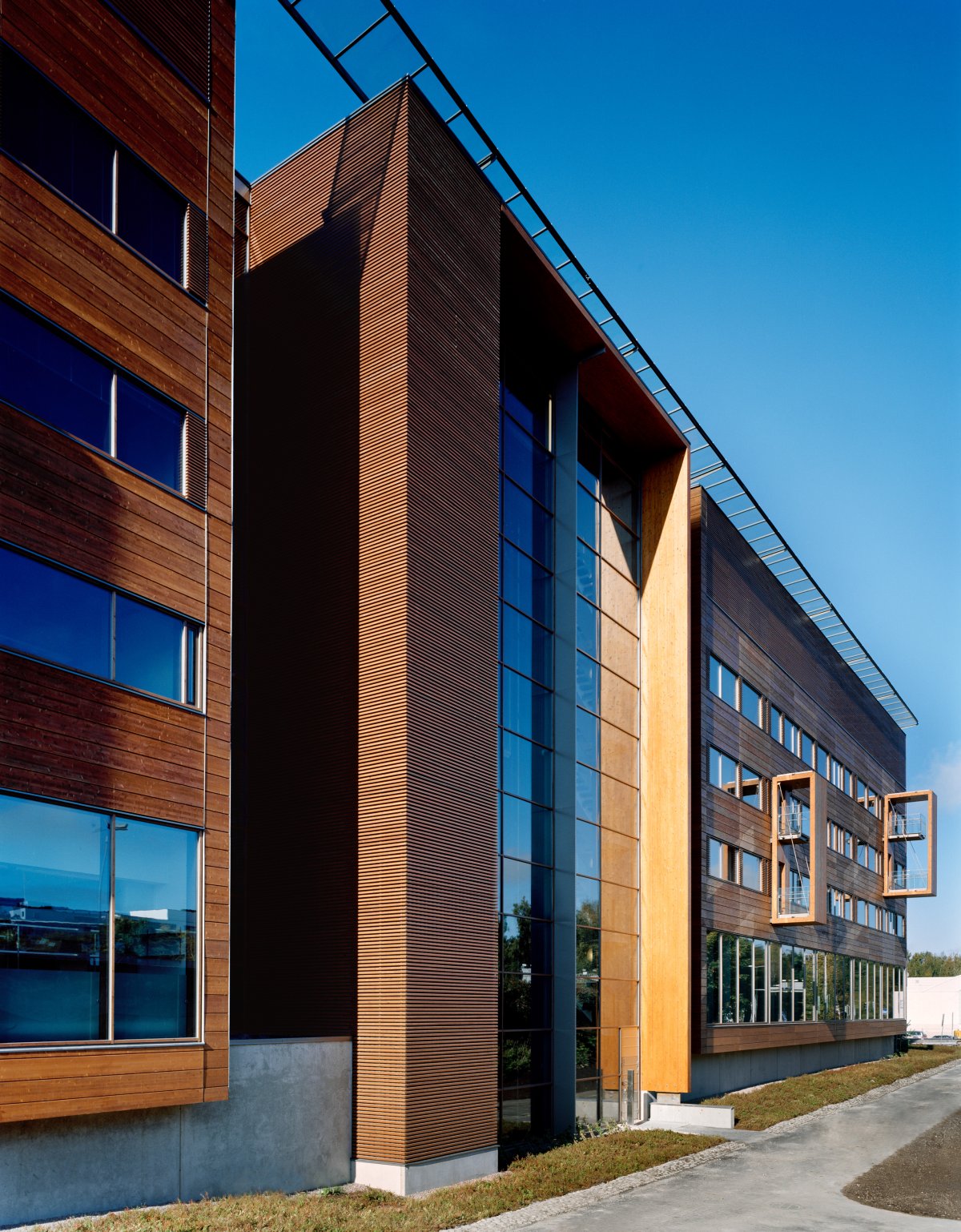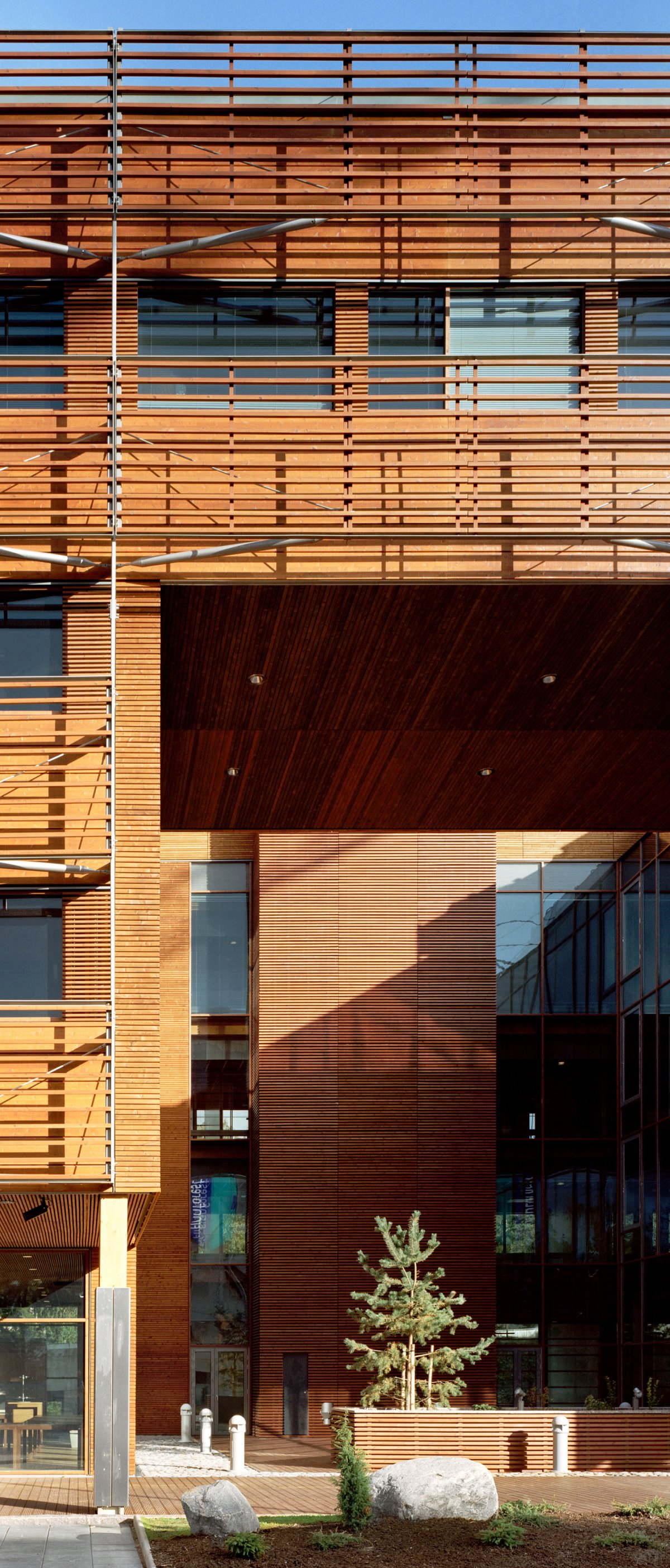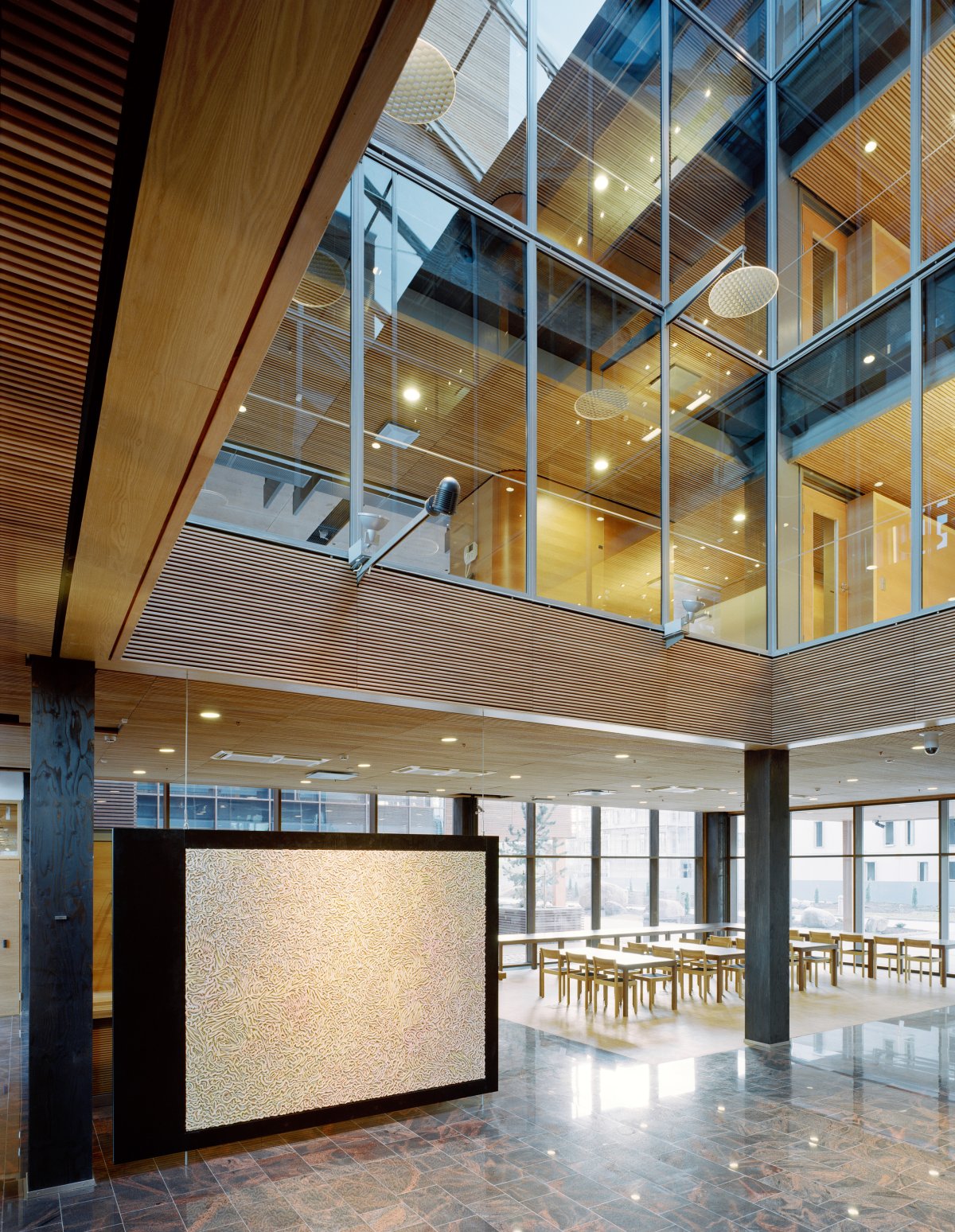Wood is a fascinating construction material that offers new challenges despite being the oldest and most tested. Its emotional impact on the human mind continues to be more positive than that of other materials; it is so coded in our consciousness. When reasonably processed, it is an authentic, live, local product of nature, which requires little energy. It is renewable, binds carbon dioxide and stores heat. It is easy to shape and repair.
As an opening to new possibilities for wood, Finnforest organised a design competition for a modular office in spring 2003, inviting architects from Finland, Sweden and Denmark to participate. The aim was to achieve an industrial export product, which could be adapted in size and assembly to suit different situations. The winner was the entry of Pekka Helin’s team, “Sydänpuu” (‘heartwood’). On completion, the building was the biggest wooden office building in Europe. The programme included 240 workplaces.
The life expectancy of the basic structures was set at over a hundred years, and the solutions were to conform to the average cost level of office buildings. The exterior walls are mainly made of elements with laminated wood studs, which were specially developed for this building. Wood is also used in facade louvres. The three balconies facing east are of glulam wood. The entire frame of the office part with its columns, L-beams and stressed skin panels are made of laminated wood. The lift wells, escape routes, ventilation plant room and basement car park are of concrete.
The building consists of rectangular modules, which associate with a stack of timber. A conical module at one end of the building refers to the typical forms of mechanically worked wood. It also serves as a landmark for those who approach Tapiola from the south. The modules contain an architectonic spatial system with high, glass-covered indoor lobbies alternating with outdoor semi-atriums. The work spaces interlock with these so that all units have varied wood-framed views in different directions over Tapiola and its nature.
The offices are small. Equipped for different situations, they are suitable for individual and team work. In materials, colours and detailing they deviate from ordinary offices. The aim has been to advance positive interaction of social and physical environment: to create a milieu that is peaceful and improves concentration. The courtyard deck has been landscaped and supplied with indigenous plants, mostly coniferous trees. The underbrush was brought from Lentiira in Kuhmo, where it was collected in connection with soil cultivation following final felling of trees, and was transplanted here with all its lingonberry, blueberry, heather and sprigs.




